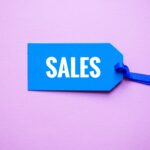Email marketing is a powerful tool that continues to drive real results in the e-commerce industry. It’s not just about sending out newsletters anymore. Instead, email campaigns now focus on customer behavior, personalization, and data-driven strategies to maximize revenue. In this comprehensive guide, we’ll explore how email marketing transforms e-commerce businesses, boosts ROI, and helps retain customers like never before.
📩 The Power of Email Marketing in E-Commerce
Email marketing remains one of the most cost-effective strategies for e-commerce businesses. Unlike paid ads that stop working the moment you stop funding them, email lists are assets you own. They allow you to nurture leads, upsell products, and recover lost sales.
According to Statista, global email users are expected to reach 4.6 billion by 2025, showing no signs of slowing down. Moreover, the Data & Marketing Association reports an average return of $42 for every $1 spent on email marketing. These numbers highlight its importance and effectiveness.
🎯 Personalization Increases Conversion Rates
One-size-fits-all emails no longer work. Customers expect content tailored to their needs, preferences, and behaviors.
Modern e-commerce brands use behavior-triggered emails such as:
-
Abandoned cart reminders
-
Product recommendations
-
Post-purchase follow-ups
-
Re-engagement campaigns
These personalized messages see open rates up to 50% higher than generic campaigns. They also lead to increased click-through rates, which ultimately boost conversions.
Recommended Tool: Klaviyo is one of the top email marketing platforms for e-commerce brands, offering smart segmentation and real-time data integrations.
🛒 Recovering Abandoned Carts with Targeted Emails
Cart abandonment is a massive challenge in e-commerce. In fact, over 70% of online shopping carts are abandoned, according to Baymard Institute.
Email marketing helps reclaim lost revenue by sending timely reminders to customers. Most effective campaigns include:
-
A clear image of the abandoned product
-
A personalized message
-
A discount or free shipping incentive
-
Scarcity triggers (“Only 3 left!”)
Sending 2–3 follow-up emails has proven to significantly increase recovery rates. Automating these flows ensures you don’t miss any potential sales.
📈 Boosting Repeat Purchases and Loyalty
Customer acquisition is expensive. That’s why smart e-commerce marketers focus on customer retention and lifetime value (LTV).
Email marketing supports this by:
-
Sending loyalty rewards
-
Offering exclusive discounts
-
Inviting customers to referral programs
-
Promoting new arrivals or restocks
Segmenting loyal customers allows you to nurture them further with VIP perks or early-access offers. The result? Increased customer satisfaction and long-term revenue growth.
🧠 Building Brand Awareness Through Storytelling
People don’t just buy products—they buy experiences and stories. Email marketing lets brands communicate their voice, mission, and values directly.
Use welcome series to introduce your brand. Include founder’s stories, customer testimonials, and behind-the-scenes content. These narratives build trust and create emotional connections that lead to repeat business.
Example: Brands like Allbirds and Glossier excel in using storytelling emails to build deep customer loyalty.
📊 Data-Driven Insights for Smarter Campaigns
Email marketing platforms provide robust analytics. These insights help you:
-
Understand open and click rates
-
Track conversion performance
-
Identify top-performing products
-
A/B test subject lines and content
With platforms like Mailchimp, ActiveCampaign, and Omnisend, you can optimize every part of your email marketing funnel. The goal is constant improvement and maximizing ROI.
📱 Mobile Optimization is a Must
Over 60% of emails are opened on mobile devices. If your emails aren’t mobile-friendly, you’re losing out on engagement and sales.
Ensure:
-
Responsive design
-
Short, compelling subject lines
-
Clear CTAs (Call-to-Actions)
-
Fast-loading images
Use tools like Litmus to test email designs across multiple devices before launching your campaign.
🚀 Automated Workflows Save Time and Increase Sales
Email automation transforms how e-commerce businesses operate. Set-and-forget workflows ensure timely communication with your customers.
Key workflows include:
-
Welcome email series
-
Cart abandonment sequences
-
Birthday and anniversary messages
-
Replenishment reminders (for consumables)
Automation platforms like Drip, ConvertKit, and Klaviyo offer easy-to-build workflows with advanced triggers and personalization options.
🧩 Seamless Integration with E-Commerce Platforms
Your email tool should integrate easily with your e-commerce store. Whether you’re on Shopify, WooCommerce, or BigCommerce, choose platforms that sync customer data automatically.
This ensures you can:
-
Segment based on purchase behavior
-
Send dynamic product recommendations
-
Track revenue from each email campaign
Pro tip: Use UTM parameters to track email campaign performance in Google Analytics.
💬 Driving More Reviews and User-Generated Content
Product reviews build trust. Email marketing helps collect more reviews post-purchase.
Send emails asking for feedback 5–7 days after delivery. Offer incentives like discount codes or loyalty points to encourage responses.
You can also invite users to share photos of their purchases on social media with branded hashtags, helping you generate authentic content and increase visibility.
📦 Promoting Seasonal and Flash Sales
Email is the most direct way to announce:
-
Holiday discounts
-
Clearance sales
-
Limited-time offers
Use urgency (e.g., countdown timers, limited stock alerts) and exclusive email-only deals to boost conversions.
Consider segmenting based on past shopping behavior to tailor your sales emails for better results.
🌎 Reaching Global Audiences with Localization
Selling internationally? Email marketing allows you to localize campaigns by:
-
Language
-
Currency
-
Regional holidays
-
Time zones
This creates a more personalized experience and improves engagement across borders.
Platforms like Sendinblue and MailerLite support multilingual campaigns and time zone sending.
🔒 Ensuring Compliance with Email Laws
Staying compliant is critical. Always follow laws like:
-
GDPR (Europe)
-
CAN-SPAM (USA)
-
CASL (Canada)
Include clear unsubscribe options, never buy email lists, and obtain consent before sending promotional content.
Using double opt-in methods also helps keep your list clean and improves deliverability.
📣 Encouraging Social Media Engagement
Email marketing can amplify your social media presence.
Include social media buttons in your emails. Promote social contests, polls, or giveaways to drive cross-channel engagement.
When used correctly, email and social media can work together to boost brand visibility and increase conversions.
🔄 Email List Hygiene is Crucial
A clean email list ensures better deliverability and engagement.
Regularly remove:
-
Inactive subscribers
-
Hard bounces
-
Unsubscribed users
Send re-engagement campaigns to win back cold leads. If they don’t respond, it’s best to let them go to maintain sender reputation.
🔧 Best Email Marketing Tools for E-Commerce
Here are some top tools tailored for online stores:
-
Klaviyo – Best for Shopify
-
Omnisend – All-in-one automation
-
Drip – CRM + Email for e-commerce
-
ConvertKit – Creator-focused stores
-
ActiveCampaign – Powerful automation
-
MailerLite – Budget-friendly
Each of these platforms offers unique features that help grow and monetize your list efficiently.
💡 Final Thoughts: Email Marketing Is Essential for E-Commerce Growth
Email marketing isn’t dead. It’s evolving. When done right, it drives traffic, boosts sales, and builds lasting customer relationships.
If you’re not leveraging it yet, you’re leaving money on the table. Whether you’re a startup or scaling brand, email marketing should be at the core of your digital strategy.













